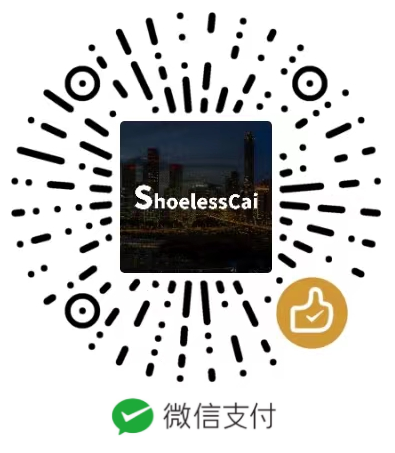
彭博推送 | 美国控告印尼镍生产非人道主义
译文
Annie 跟进今天的故事,主要从杂志获取,都是 6 月的议题:印尼的肮脏而死气沉沉的镍挖掘商业。随着美国逐渐开始识别风险。另外,哈里斯也不高调地开展活动,还有关于汉堡为什么变贵了。
美国听到警钟了,这个月其印尼镍工厂强制劳动。这种金属,对于很多电动汽车的电池是非常关键的。
这是首次劳工局将印尼镍生产加入其探索名单,见证了多家 NGO 的报告,招募工人的过程是具有欺骗性的。这项欺骗性招工面临暴力惩罚,以及限制其行动。美国劳工局提升对于人口贩运的关注,程度回升至 2022 年。印尼,是全世界最大的原材料储备国 ,已然吸引了万亿美元的中国投资,关于挖掘其发展,以及工厂的建造。
human trafficking 人口贩运
该名单被加入最高关注,关于自动化生产绿色革命的真实价格。“许多工人收到更低的工资,比起承诺的,随之而来的是更长的工作时间。”劳工局报告说到,“工人常规都有护照,但是他们的护照都是被没收的,还随意扣减工资。还有物理的、口头的暴力,作为惩罚的方式。”
许多工作者在园区内,主要由中国公司管理,依据部门同事的说法。很多劳动力指标,包括“移动限制、隔离、经常监视、强制过度加班”报告写道。“所有这一切, 报告说,都是生产镍的时候常规操作。”在印尼是这样的。
我的同事 Matthew 和我花了一年的时间调研,调研印尼镍工厂不为人知的一面,追踪其路径直至电动汽车生产。我们的报告显示,这些国家的工作也是非常危险的,给到工人的安全措施非常少。
随意蔓延的、复杂的工厂,以及 Sulawesi 岛屿上的冶炼厂,一些关键事故和生态环境破坏也是有延伸资料的。工人们也会被炉渣埋了,或者被沉重的设备压坏,或者在工厂跌落。仓库病症通常是最常见的抱怨,在周围的社区。我们归档了一些比较麻烦的 ESG 风险,在我社的彭博商业部门。
smelters 冶炼厂
slag 炉渣
镍冶炼的过程是印尼的基础工程。印尼,由中国公司投资资助,也进入全球化镍供应链行列,在过十年期间。这项金属在不锈钢、电池都有广泛应用,也为这座东南亚国家创造了巨额财富,以及数以万计的工作。正如全世界政府都在加紧生产 EV 骑车(环保车),由于但其环保责任。
nickel smelting 镍冶炼
尽管围绕着印尼镍生产的风险还存在于供应链,更加不清晰的是,如何以及是否行业会采取行动。由于劳动力和工厂都廉价,印尼提供了巨大的成本优势,相较于其他生产镍的国家而言,例如澳大利亚、加拿大。这一点尤为重要,既然关于环保车的需求在放缓,向生产商施压,以减少成本,可以保证利润。ShoelessCai 评注,如果前述属实,缩减印尼镍生产的成本,可能比较困难。
特斯拉在其最近的报告中指出,环保车转型,“仅仅依赖非印尼的镍生产商,几乎是不可能的”。结论是这样的,印尼,承担全球镍生产一半生产力,一直在排挤价格更高的竞争者。
has been squeezing out pricier competitors 一直排挤价格更高的竞争者
东南亚国家,也在寻找关键矿物,再与美国交易,保证镍在美国环保车行业,始终维持其“地位”。强制劳动的另一个点,会使得上述用途更加困难,但似乎全世界也没太多选择余地。
confiscated by employers and experience arbitrary deduction of wages 没收护照,以及随意扣工资
NYC 市长的简报中指出,被指控联播贿赂,和欺诈指控。之前在彭博商周,一项市政援助的欺诈,正在被调查。
中国最高领导班子加大力度,重新点燃活力,此前还说要加大财政支出,以及稳定财产板块。
ramped up efforts 加大力度
拜登重新开启选举运动,开启激进的计划,悄然将自己 81 岁投入到第二段总统选举。他雇佣了一支队伍,几乎 200 人全是技术背景 —— 这是非常大的数字。大多数雇佣 20 几个精通技术的人才,以目前的互联网发展,以及维护 20 多个社交媒体的工作量而言。他的团队还包括新开的渠道,在 TikTok 上。同时,他鼓励了上百个线上内容创作者,创作他们自己喜好的关于选举的内容。拜登赋予他们足够的信任,信任他们会触达人民,以及选举活动也会如期举行,甚至赢得选举。
conversant 熟悉的
writ large 大字体
就像拜登的选举活动的大字体那样,计划并不起作用。总统正在证实他并不具有人气,甚至在其自身党派民主党也是如此,今年 7 月他退赛前也是如此。然而,一旦副总统 哈里斯 继承了操作,同样策略很快看上去很有效。拜登选举活动同时在 30 个社交媒体上开启,被重新定位了(were rebranded)。人们很快谈论其首发,出现在英国流行歌手 Charli POST,发推之后,瞬间获得百万关注。现在关注人数是 450 万。“我们正在冲刺” Kapp 说到,他今年 25 岁,是选举活动的工作人员,负责社交媒体账户维护,他在自己的 TikTok 账户上说到。
没多久,哈里斯面临社交媒体更加复杂、更加碎片化(的素材)。关于数字选举的技巧,其实始终是在改变的,以及今年候选人浸润在社交账号的选择中,还修改了算法,使其更加适合非政治的内容,为了完成一项成功的数字的选举,还能转换成更加高端的数字辩论的材料。暂且不说这一点,哈里斯团队在其任职期间是成功的。数字选举专家说到,事情几乎不可能变得更好。
Riley Griffin, Sarah 和 Kurt 写的报道,“哈里斯的选举,如何使得拜登隐秘操作成功的?”,使得特朗普非常慌乱。
tizzy 慌乱
造成快餐价格骇人的关键因素
意大利人有一种干酪(mozzarella),而法国人 喜欢 baguettes。尼日利亚人喜欢 jollof rice,美国人,喜欢汉堡薯条。而我们,喜欢它们便宜。自从麦当劳首次开设快餐店开始,1948 年时候,15 美分就能吃一餐。不昂贵的牛肉,变成美国人的敲门砖(toushstone),这个和学校舞会、投票权利一样,是与生俱来的。
practically a brightright 与生俱来的
school prom 学校舞会
那些天,对于美国人而言是名不副实的。2024 年 Q2,快餐平均价格,一个汉堡 8.41 美元,麦当劳的价格已经涨价 16% 了,Big Mac 汉堡均价,5 月是 5.29 美元,不带薯条、可乐、只有汉堡。这个价格也是涨价了 21%,相较于 2019 年而言。汉堡足够昂贵了,贵到低收入消费者吃得越来越少了,使得连锁店的销售量跌入 4 年来最低,季度报纸说到。
an entitlement drifting out of reach 名不副实
金拱门(The Golden Arches)回应了这项交易,有价值的餐饮,或者买一送一,似乎正在获得某些牵引力。其他快餐连锁店,也跟上了。然而,考虑到价格战显示一种廉价汉堡是一切的征兆,是一种误读。因为这一切是牛肉发生变化,而非快餐。
Deena 在食盐专栏里写道,天气和市场条件如何联系在一起,影响牛肉成本的。最终得出结论,更加廉价的汉堡。
get traction 获得牵引力
原文
Annie Lee follows up today on a story from the magazine’s July issue about the dirty and deadly business of nickel mining in Indonesia, as the US comes to terms with the risks. Plus: Kamala Harris’s meme campaign and why burgers are getting more expensive.
The US sounded an alarm this month over the use of forced labor in Indonesia in the production of nickel, a metal that’s critical to many electric-vehicle batteries.
It’s the first time the Department of Labor has added Indonesian nickel to its exploitation list, citing multiple NGO reports about workers being deceptively recruited, facing violent punishments and having their movement restricted. (The State Department had raised human trafficking concerns back in 2022.) Indonesia, home to the world’s largest reserves of the raw material, has attracted billions of dollars in Chinese investment in mine development and the construction of processing plants.
The listing adds to the mounting concerns over the true price of the auto industry’s green revolution. “Many workers receive a lower wage than promised along with longer work hours,” the Labor Department report said. “Workers regularly have passports confiscated by employers and experience arbitrary deduction of wages, as well as physical and verbal violence as means of punishment.”
Many workers are in industrial parks that are majority-owned by Chinese companies, according to the department, and there are indicators of forced labor, including “restriction of movement, isolation, constant surveillance, and forced overtime,” it added. “All of which are reportedly common practices in the production of nickel” in Indonesia.
My colleague Matthew Campbell and I spent more than a year investigating the dark side of Indonesian nickel and tracking its route into electric cars. Our reporting found that the jobs in the country are also dangerous, with few safeguards for workers.
At a sprawling complex of factories and smelters on the island of Sulawesi, there’s an extensive record of fatal accidents and ecological damage. Workers have been buried under slag, crushed by heavy equipment and killed in falls. Respiratory illnesses are a common complaint in the surrounding community. We documented the troubling ESG risks in our Businessweek feature.
The nickel smelting process at a foundry in Indonesia. Photographer: Bannu Mazandra/AFP
Indonesia, helped by the investments from Chinese companies, has transformed the global nickel supply in the past decade. The metal used in stainless steel and batteries has created fortunes in the Southeast Asian country—and tens of thousands of jobs—just as governments around the world are promoting EVs on environmental grounds.
Although the risks around Indonesian nickel aren’t lost on the supply chain, what’s less clear is how and whether the industry will take action on it. With its cheap workers and power, Indonesia offers a drastic cost advantage compared with other sources of nickel, such as Australia and Canada. That’s especially important, now that the pace of demand for EVs has slowed, putting pressure on manufacturers to cut costs to stay profitable.
Tesla Inc. pointed out in its most recent impact report that the EV transition “will not be possible by only relying on non-Indonesian nickel.” Quite so: Indonesia, accounting for roughly half of global production, has been squeezing out pricier competitors.
The Southeast Asian country has been seeking a critical minerals deal with Washington to ensure its nickel plays a role for American EV companies. The addition to the forced labor list could make that more challenging, but the world doesn’t seem to have a lot of alternatives.
In Brief NYC Mayor Eric Adams has been indicted on federal bribery and fraud charges. Previously in Businessweek Daily: A cheat sheet to the city aides under investigation.
China’s top leaders ramped up efforts to revive growth with pledges to support fiscal spending and stabilize the property sector.
Joe Biden’s reelection campaign had an ambitious plan to meme the 81-year-old into a second term as president. It hired a team of almost 200 digital staffers—a large number of whom were twentysomethings conversant in modern internet-speak—and operated a range of social media accounts, including a newly created one on TikTok. At the same time, it encouraged hundreds of online content creators to make their own election-related content, trusting they’d reach people the campaign would have trouble winning over itself.
Like the Biden campaign writ large, the plan didn’t work. The president was proving unpopular even among Democrats before he dropped out of the race on July 21. But once Vice President Kamala Harris inherited the operation, the same strategy quickly started looking effective. The Biden campaign’s 30-odd social media accounts were rebranded. Its rapid response TikTok account, now @KamalaHQ, demonstrated it knew what the internet was already talking about with its first post, a screenshot of the British pop star Charli XCX’s tweet declaring “kamala IS brat.” Within days, the number of followers doubled, surpassing 1 million. (It now has 4.5 million.) “We’re down to sprint, babes,” Lauren Kapp, the 25-year-old campaign staffer in charge of the account, said on her personal TikTok,
@polisciprincess, the following weekend.
Short on time, Harris is facing a media landscape that’s more complex and fragmented than ever. Tactics for digital campaigning are always changing, and this year candidates are navigating social media platforms that have tuned their algorithms to favor nonpolitical content. The extent to which successful digital campaigning translates into improved electoral outcomes is a matter of debate. Regardless, the Harris team is succeeding on its own terms. Digital campaign experts say things could hardly be going better.
Read Riley Griffin, Sarah Frier and Kurt Wagner on the posts sending Donald Trump “into tizzy fits” (in the words of one expert): How Harris’ Campaign Finally Made Biden’s Meme Strategy Work
One Driver of Fast-Food Sticker Shock
Illustration: Rui Pu for Bloomberg Businessweek
Italians have mozzarella, the French enjoy baguettes, Nigerians have jollof rice, and Americans have burgers and fries—and we like them cheap. Ever since the McDonald brothers first launched their vision of fast burgers at 15 cents a pop in 1948, inexpensive beef has become an American touchstone, practically a birthright along with voting and the high school prom.
These days, that’s an entitlement drifting out of reach for many Americans. In the second quarter of 2024, the average price of a fast-food restaurant burger was $8.41, up 16% from five years ago, according to food consultant Technomic’s Ignite Menu data. Even at McDonald’s, the average price of a Big Mac (no fries, no drink, just the sandwich) in June was $5.29, a 21% increase from 2019. Burgers have gotten expensive enough that low-income consumers have been coming in less frequently, driving the chain’s first sales drop in four years, it said in its last quarterly earnings.
The Golden Arches has responded with deals—a value meal here, a buy-one-get-one there—and it seems to be getting traction. Other fast-food chains have followed, too. But to think the value wars are a sign that cheap burgers are coming for all is to misread what’s happening not to fast food, but to beef.
Deena Shanker in her Extra Salt column writes about how weather and market conditions combine to affect the cost of beef, bringing about: The End of the Cheap Burger
原文链接
长按/扫码,有您的支持,我们会更加努力!


|
